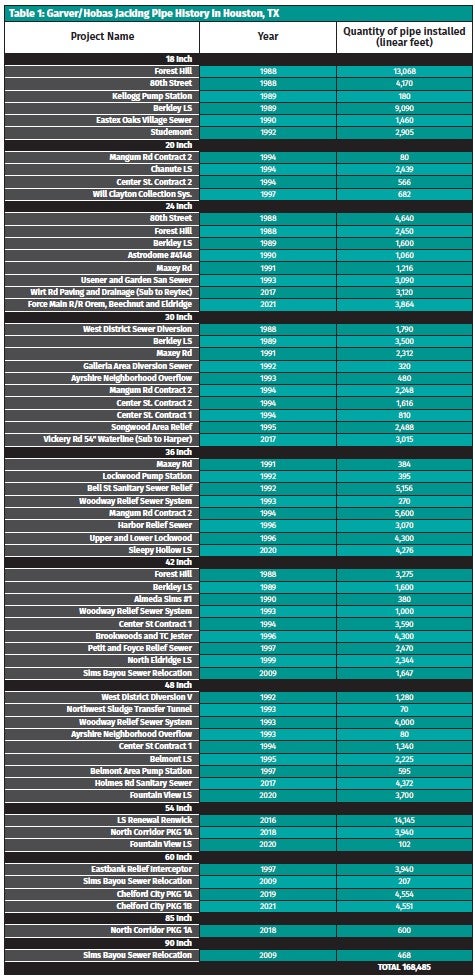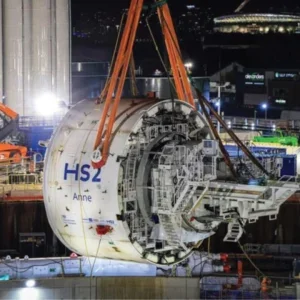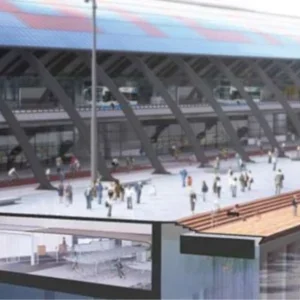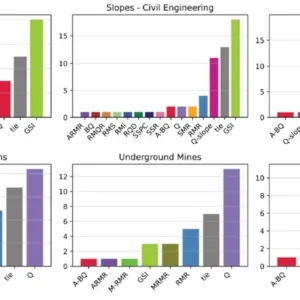The history of microtunnelling in the United States is one of innovation and perseverance.
Among the pioneers of this groundbreaking technology is BRH Garver, a company that has been at the forefront of trenchless technology for decades. During the recent Texas Water Show, I sat down with Alan Pate, President of Pate Garver – successor to BRH Garver, which had been purchased by a private equity firm – to discuss his company’s early experiences with using Hobas Pipe and, following on, its role in advancing microtunnelling in the U.S.
EARLY DAYS OF FIBREGLASS PIPE IN MICROTUNNELLING
When Hobas Pipe first began manufacturing fibreglassreinforced pipe in the U.S., microtunnelling was still in its infancy. Engineers and contractors were looking for materials that could withstand the challenges of trenchless installation while offering longevity and structural reliability. Pate Garver quickly recognised the potential of Hobas Pipe’s fibreglass-reinforced polymer mortar (FRPM) pipe for these demanding applications.
Alan Pate recalls one of the earliest microtunnelling projects that BRH Garver Construction undertook using Hobas Pipe. The project, which took place in 1988, was actually an early microtunnelling project in the U.S. It required two tunnelling machines and presented significant technical challenges due to soil conditions, groundwater infiltration, and stringent alignment requirements.
At the time, most contractors were accustomed to using traditional materials like concrete and steel, but Pate Garver saw an opportunity to leverage the benefits of fibreglass pipe.
“It was difficult to use concrete pipe because it would break,” Alan Pate explains. “Then we found Hobas Pipe.”
OVERCOMING CHALLENGES WITH INNOVATION
One of the primary advantages of Hobas Pipe in microtunnelling is its smooth exterior, which reduces jacking forces during installation.
This was a game-changer for Pate Garver, allowing them to push longer drives with greater precision.
Additionally, the corrosion-resistant nature of the pipe meant that it could be installed in aggressive environments without the need for protective coatings or linings.
Another critical advantage is that Hobas Pipe does not absorb water, making it even more reliable in difficult conditions.
Pate emphasises how the project helped shape industry perceptions of fibreglass pipe.
“The ability to maintain structural integrity while withstanding the stresses of installation proved that Hobas Pipe was a reliable solution,” he says. Quality control means it is very reliable and the pipe behaves predictably, he adds. “We would tunnel only with Hobas.”
LASTING IMPACT ON THE INDUSTRY
The success of this early microtunnelling project set a precedent for future installations. It demonstrated that fibreglass pipe could not only meet but exceed the expectations of the industry.
As a result, Pate Garver and other contractors began incorporating Hobas Pipe into a growing number of trenchless projects, paving the way for its widespread acceptance.
Today, decades after that first project, Hobas Pipe remains a preferred choice for microtunnelling applications across the U.S. Additionally, its ability to handle high jacking loads further enhances its reputation for trenchless tunnelling.
Reflecting on those early days, Pate expresses pride in his company’s role in advancing microtunnelling technology.
“Looking back, it’s incredible to see how far we’ve come. Hobas Pipe played a key role in that journey, and we’re proud to have been among the first to put it to the test in real-world conditions,” he says.
The table shows the quantity (linear feet) of Hobas Pipe installed by Pate Garver in Houston, TX, in diameters ranging from 18-in to 90-in.







